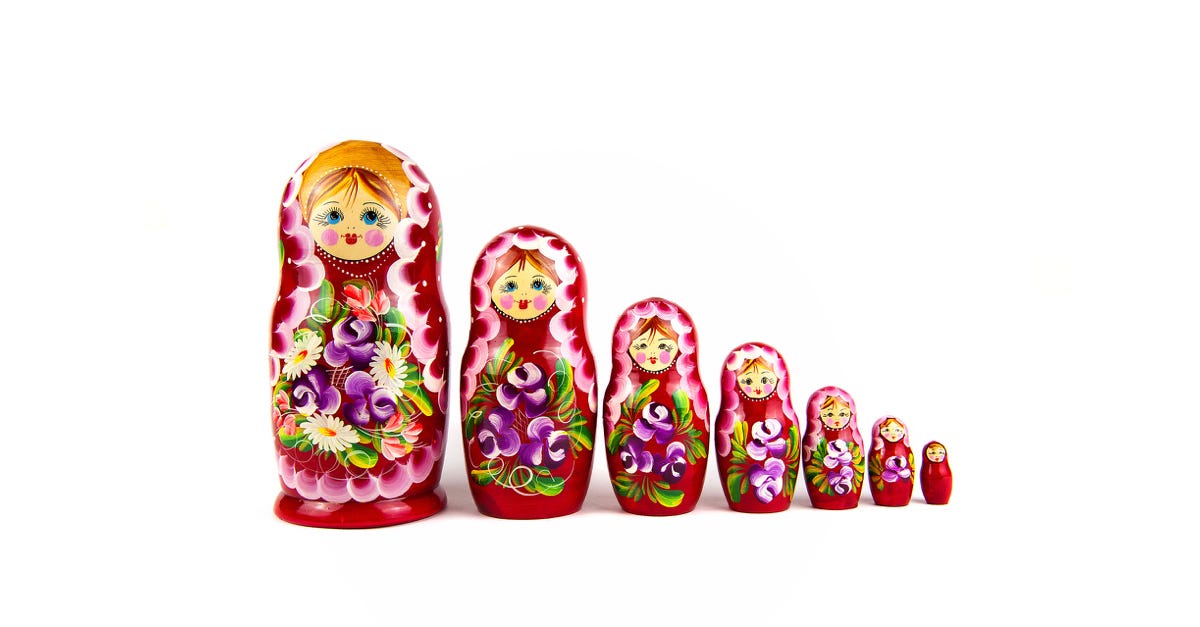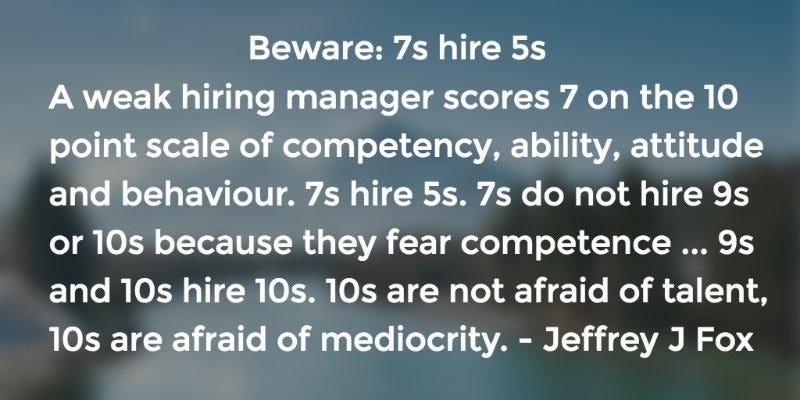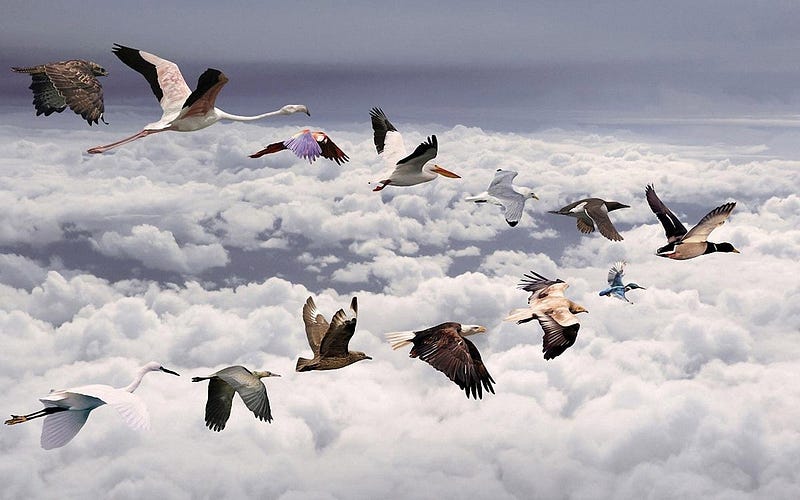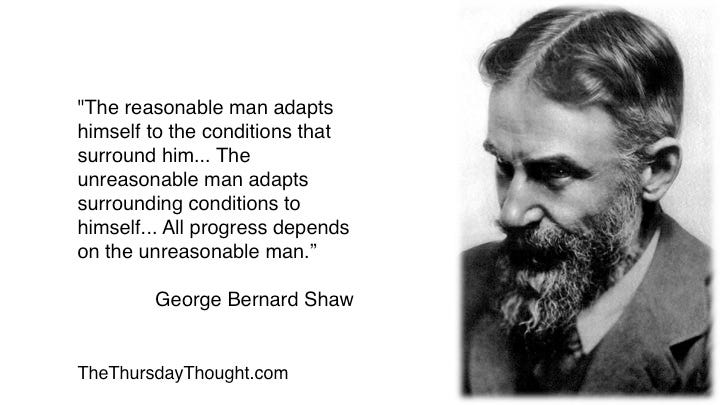
“Success is dangerous. One begins to copy oneself, and to copy oneself is more dangerous than to copy others. It leads to sterility.” — Pablo Picasso
Russian dolls or Matryoshka dolls are sets of wooden dolls of decreasing size placed one inside another.
In Ogilvy on Advertising, David Ogilvy described how recruiting smart people was the key to his company success.
“When someone is made the head of an office in the Ogilvy & Mather chain, I send him a Matryoshka doll from Gorky. If he has the curiosity to open it and keep opening it until he comes to the inside of the smallest doll, he finds this message:
“If each of us hires people who are smaller than we are, we shall become a company of dwarfs. But if each of us hires people who are bigger than we are, we shall become a company of giants.”
Why does the Russian Doll anecdote matter?
A mere 12% of Fortune 500 companies in 1955 were still on the list in 2016. The other 88% have either gone bankrupt or were merged or acquired. Many of the companies on the list in 1955 are victims of irrelevance, “me-too propositions”, disruption or poor leadership.

Leadership in many companies is “the same”. The same in the way it is conducted, the same in the way it is incentivised and the same in the way it is mentally charged. Leaders are often surrounded by yes people, who do not respectfully challenge the leader’s decisions.
We are human and as humans we are wired to be tribal. Tribes are made up of people who share similarities. We naturally like to hire in our own likeness or that of the company DNA.
Our brains feel safe when we flock with people who are similar to us. Our body releases oxytocin when we feel we belong to a team, tribe or community of people who are like us. It is embedded in our DNA to fit in, imagine in our caveman days, you start to question tribal leadership, you question the way things are done. If you did this back then, you would be ejected from the tribe and would probably die.
When we hire from the same business schools, recruit from the same ethnicity and train everyone in the same way we create a tribe.
Creating a tribe with a common goal is great business practice.
Creating a tribe where everyone thinks the same is not.
A Company of (Almost Giants)
60% of US CEOs are over 6 foot tall, but only 15% of the total US population is over 6 foot.
36% of US CEOs are over 6.2 feet, but a mere 4% of the US population is over 6.2 feet tall!
This limits the selection gene pool and that in turn limits the mental selection pool.
The Similarity-Attraction Effect

The similarity-attraction effect refers to our tendency to be attracted to people who are similar to ourselves in attitudes, values, preferences and worldview.
Why does this matter? When we are similar to others, they are more likely to confirm and reinforce our opinions and worldview than to contradict those views. This would suggest they will not prove problematic when we are busy making decisions.
For these reasons, it is very common for important roles to be filled with people who share similar physical and mental attributes to their predecessor.
If not, the role is often filled by a person who matches a preconceived notion of how they should look and think.
Groupthink occurs in organisations (big and small, but mostly big and non-commercial) when groups prioritise avoiding conflict and reaching consensus over making the best decisions possible.
Such decisions are rarely in the interest of the company, but rather in the interest of the people within the group. Group members minimise conflict and reach consensus decisions without critically evaluating alternative viewpoints by actively suppressing dissenting viewpoints, and by isolating themselves from outside influences.
They do not rock the boat.
They ensure that no-one shouts that the emperor is not wearing any clothes, everyone toes the line and everyone keeps their jobs. There is rarely any ambition in such organisations, there is rarely any drive and the talented people leave very quickly. Those that stay become part of the problem.
The buck should stop with management, not with the hiring manager, right?
Unfortunately, management is usually complicit in ensuring that no dissenting voices get hired in the first place. Mediocrity creeps in as managers who fear change and competency hire weaker people, who are not a threat to them and won’t expose their own incompetence and 7s hire 5s.

The problem here is if a few 8’s or 11’s slipped into the business, they will leave, while you actually want the 2’s and 3’s leaving.
Diversity

There is a lot of talk of diversity lately. When a company talks of diversity, for most of us, the mind conjures images of skin colour, race, sexuality, gender, mental and physical handicaps. As an experiment, do a search for diversity in Google images and you will get lots of picture of different races holding hands.
If you picture your company as one big brain and you consider that we all have individual strengths and weaknesses. We al excel in somethings, but don’t in others. This is ok, this is excellent. We need that diverse thinking in the world. We need to hire these diverse thinkers too. In a diverse business world, the job of a leader becomes that of a master chess tactician, the leader needs to know where to place the pieces on the board in order to win.
Regardless of what any of us is doing, if we only listen to people who praise us, we won’t go very far. We all need a bit of criticism to help us grow. When good people stop asking questions, that should be a warning sign that they don’t care any more.
The world has moved to one where the value of team members won’t necessarily be doing the work, but coming up with the right work to do.
To decide on the right work we need to have constructive debate, with opinions coming from everyone.
We often undermine an idea that doesn’t come from an “expert” or the hippo (highest paid person in the room).
George Bernard Shaw termed this person the unreasonable man (ironically displaying the lack of diversity of his time).

In this business world of constant change perhaps we should cast our net wider to look for different opinions from different talent, from talent that questions us, that challenges us, that makes us better.
Perhaps we should embrace the true meaning of diversity instead of paying lip service to it.
IF YOU LIKE THIS POST PLEASE HIT A CLAP SO OTHERS MAY SEE IT
On this week’s Innovation Show EP 113 with author Debra Corey we discuss hiring and employee engagement.
The current way of treating people at work has failed. Globally, only 30% of employees are engaged in their jobs, and in this fast-paced world, that’s just not enough. The world’s best companies understand this and have been quietly treating people differently for nearly two decades.
Now you can learn their secrets and discover The Engagement Bridge™ model, proven to build bottom-line value for companies through sustainable employee engagement.
Debra Corey is the author of Effective HR Communication and the co-author of “The Rebel Playbook for Employee Engagement,” with the founder of Reward Gateway Glenn Elliott.
We discuss:
Stats on employee engagement
How new data has led to more investment in this field
The Engagement Bridge™ model
Open honest feedback
Purpose mission values
Leadership
Management
Job design
Learning
Recognition
3 underpinning elements
Pay benefits
Wellbeing
Workspace
The 5 generations in the workplace
The iceberg of ignorance:
4% front Line problems are known by management
9% are known by team management
74% known by managers
100% by employees
Monkey Fairness Experiment we mention is here:
Have a listen:
Soundcloud https://lnkd.in/gBbTTuF
Spotify http://spoti.fi/2rXnAF4
iTunes https://apple.co/2gFvFbO
Tunein http://bit.ly/2rRwDad
iHeart http://bit.ly/2E4fhfl
You can find out more about Debra here: